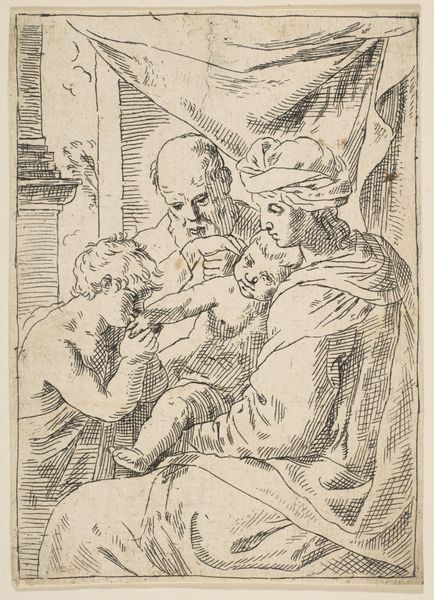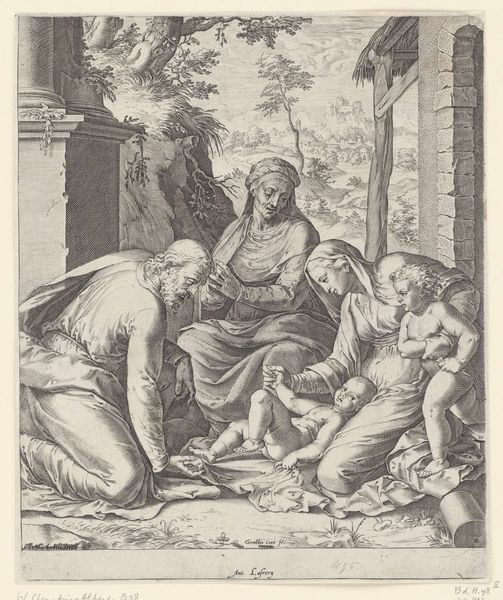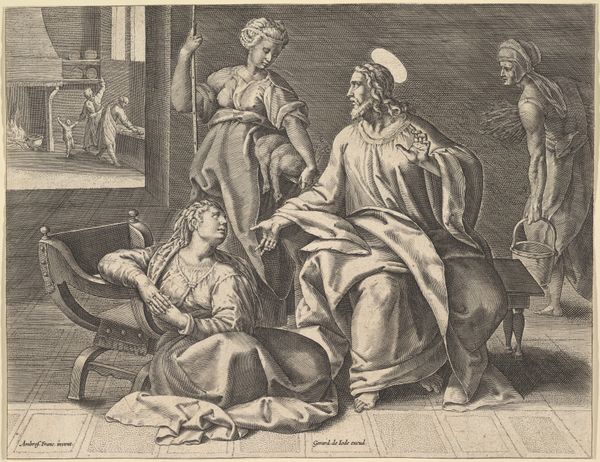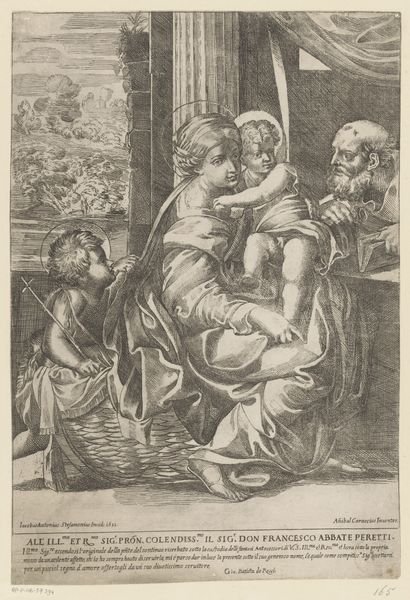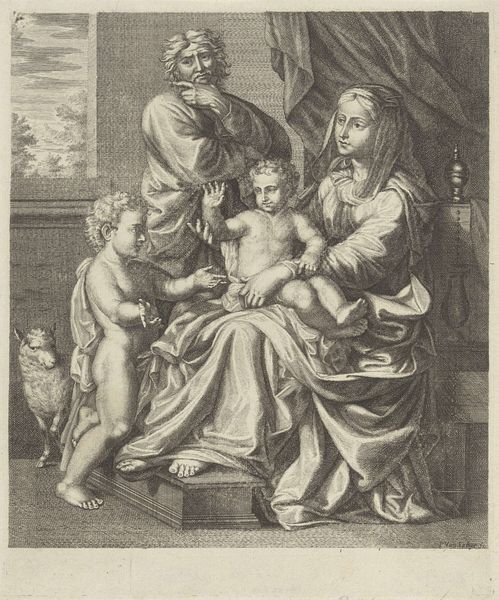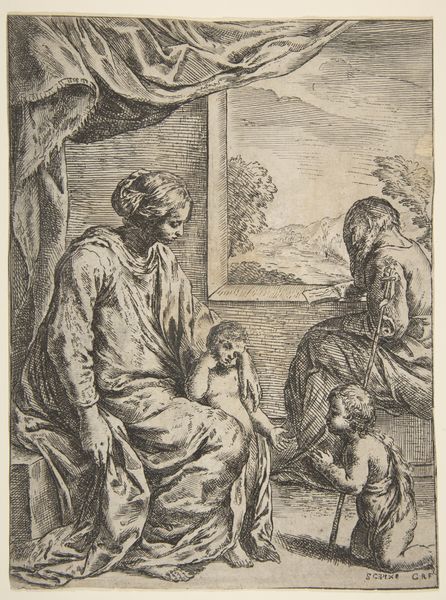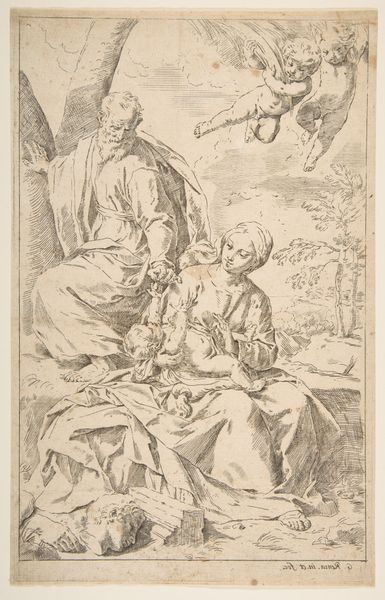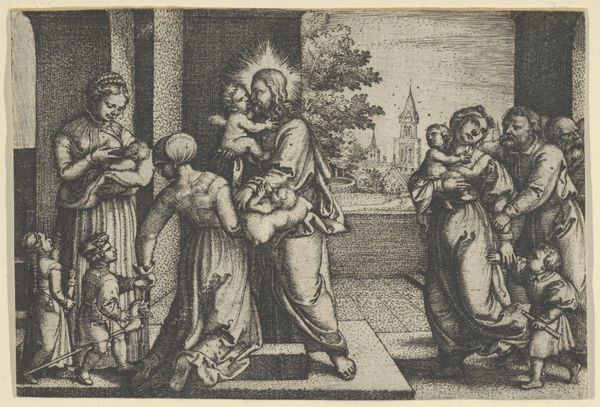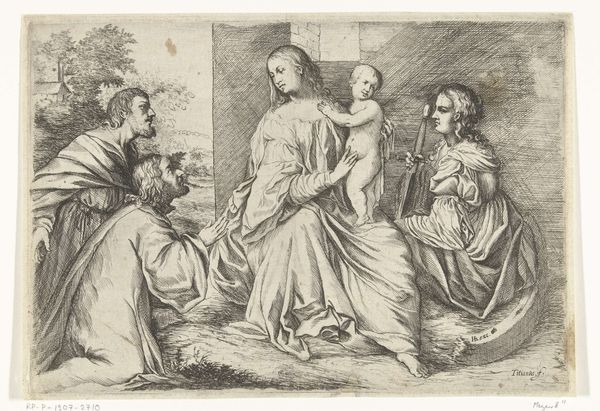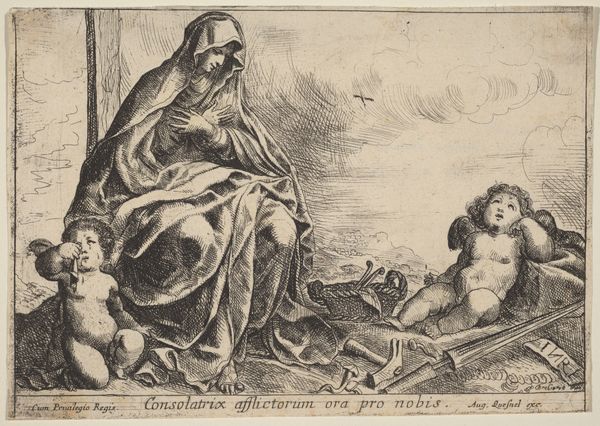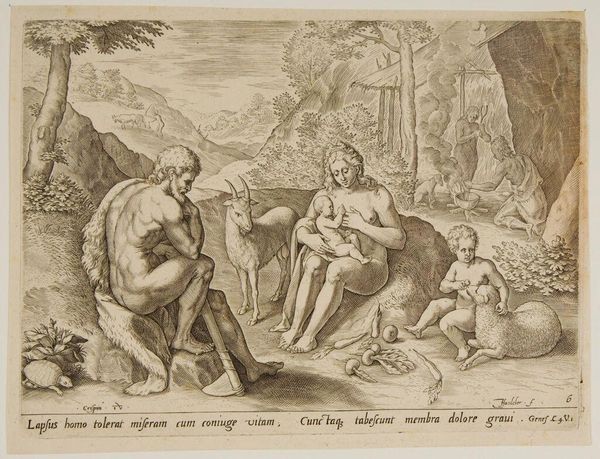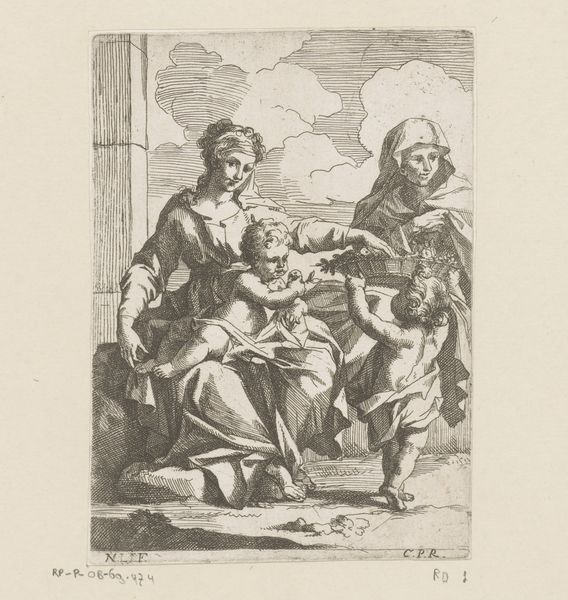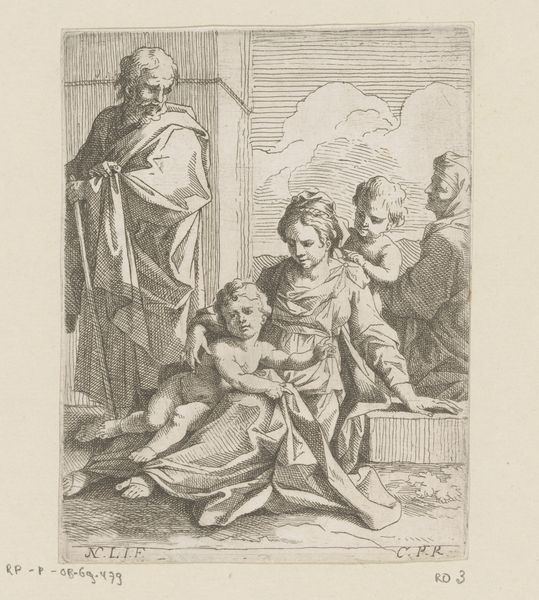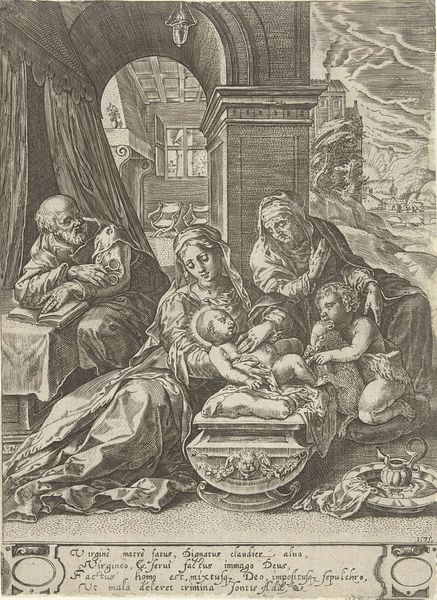
drawing, pen
#
portrait
#
drawing
#
light pencil work
#
mother
#
quirky sketch
#
baroque
#
sketch book
#
figuration
#
personal sketchbook
#
idea generation sketch
#
sketchwork
#
pen-ink sketch
#
sketchbook drawing
#
pen
#
genre-painting
#
storyboard and sketchbook work
#
sketchbook art
Dimensions: height 86 mm, width 108 mm
Copyright: Rijks Museum: Open Domain
Editor: This is "Nursing Mother with a Donkey" by Paul van Somer II, made sometime between 1670 and 1697 using pen on paper. It looks like a preparatory drawing. The composition feels a little odd with the doubled image, but the theme is timeless. What symbolic meanings do you see in it? Curator: Doubling is quite intriguing! It suggests both observation and reproduction, key aspects of artistic creation at the time. The Madonna figure is an ancient archetype; consider its transformation across cultures, from pagan goddesses to Christian iconography. What resonates through each iteration is an underlying association with nurture. Editor: So you’re saying that even with the donkey present, it refers to the Virgin Mary? Curator: The donkey further complicates, yet enriches the symbolism. The donkey has historically been used as a beast of burden but has taken on symbolic weight for humility and steadfastness. Think of its appearance in stories such as Christ's entry into Jerusalem. Doesn’t it alter your initial assumptions about the maternal image? Editor: I guess so. It does suggest an everyday scene rather than the divine... I hadn’t thought of it that way. Curator: Indeed. Consider how van Somer utilizes these pre-existing cultural symbols. The image then speaks of motherhood that transcends mere genre or religious depiction, suggesting that it may point to shared human experiences. It speaks to something elemental. Editor: It's fascinating how these symbols accumulate layers of meaning across time and cultural contexts. I hadn’t considered it to this depth before. Curator: Exactly. Now, you’re starting to see beyond the surface of the artwork and into the depth of shared visual language!
Comments
No comments
Be the first to comment and join the conversation on the ultimate creative platform.
